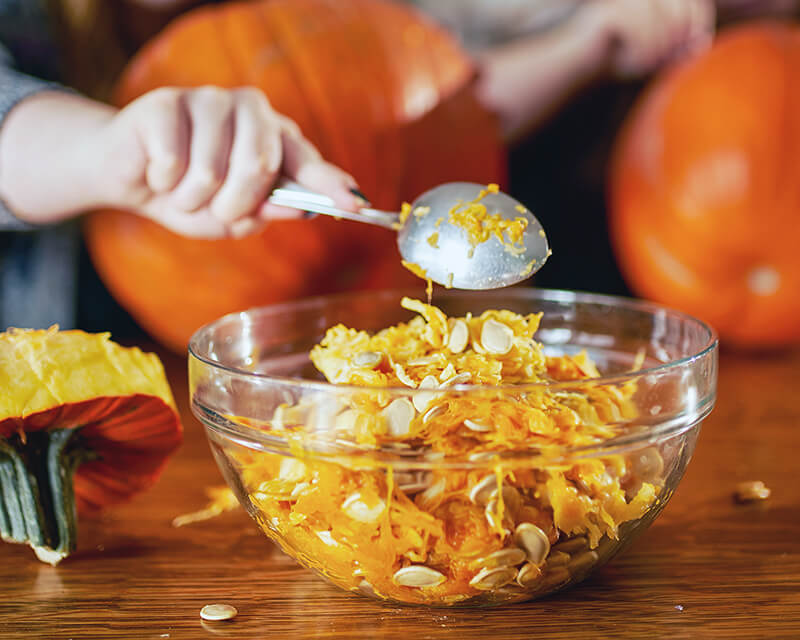Pumpkins are an original American (New World) food product. Pumpkins have been cultivated for at least 9,000 years in North and South America. They are part of the family of vining plants called Cucurbitaceae that includes cucumbers, squash, gourds, melons, and others. Pumpkins were a staple in the diet of Native American tribes who raised pumpkins as one of three main crops—maize (corn), beans, and squash. They baked or boiled the pumpkin flesh, toasted the seeds for tasty snacks, and ground the seeds into flour or meal for making bread and gruel. They also dried and saved seeds to use for planting the next year’s crop.
When European settlers arrived in the Americas, the natives showed them how to plant, grow, and use pumpkins. “We had pumpkins in the morning and pumpkins at noon. If it were not for pumpkins, we’d be undone soon,” one settler wrote in 1683. Pumpkin pudding was a real treat for the early settlers. To make it, they sliced off the top of a pumpkin, removed the seeds, filled it with milk, and then baked it until the milk had been absorbed.
Pumpkin plants have separate male and female flowers. Pumpkins develop from a fertilized female blossom. You can identify the female blossoms by a bulge in the stem behind it. The male flowers provide the pollen. Blossoms can be eaten fried, raw in salads, or as a component of soups.
The size and quality of a pumpkin is influenced by many factors, including water, temperature, insects, disease, soil type and fertility, pumpkin variety, and weed competition. Before planting pumpkins, it is helpful to conduct a soil test on the patch where the pumpkin seeds will be planted. A soil test will determine the type of soil and what nutrients are present in this soil. Then the planter will know what type of nutrients (fertilizers) to add to the soil.
After conducting the soil test and adding the necessary nutrients, pumpkin seeds may be planted when the ground temperature is 60–65F and the last frost has passed (usually May or June). The seeds should be planted five to eight feet apart, and the rows should be six to eight feet apart. The plants need to be pollinated by bees or by hand about eight to ten weeks after planting.
From planting until harvesting the pumpkins need to receive an adequate amount of water as well as hoeing or hand weeding to minimize competition from weeds. Pumpkins can be harvested after the shell is completely hardened. It usually takes 90–110 days for pumpkin plants to grow from seedlings and produce fully mature pumpkins. Harvested pumpkins should be stored in a cool, dry place to keep from rotting.

